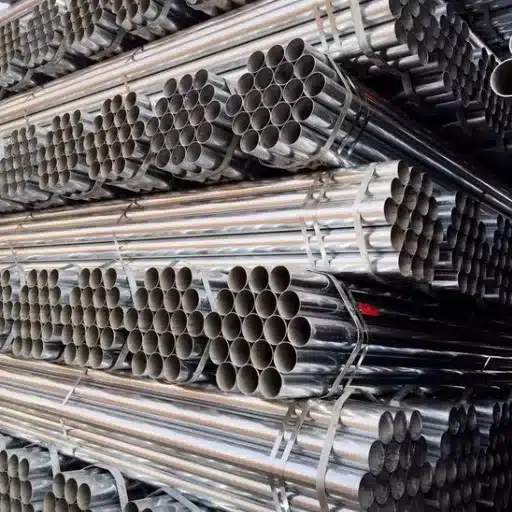Maintaining hygiene and safety is of utmost importance for industries such as food and beverage, pharmaceuticals, and even biotechnology. Flouting the sanitary processes may lead to contamination, which not only lowers the quality but can also endanger public health. That is why sanitary tubing is critical, as it supports the clean and controlled processes within an industry. But how does it work? This article will cover sanitary tubing extensively, including its design, construction material, and its role in achieving accepted standards of hygiene. Understanding the function of sanitary tubing will enable one to appreciate the value assigned to it by industries that require clean and safe operations.
What is Sanitary Tubing and Its Importance in Hygiene?
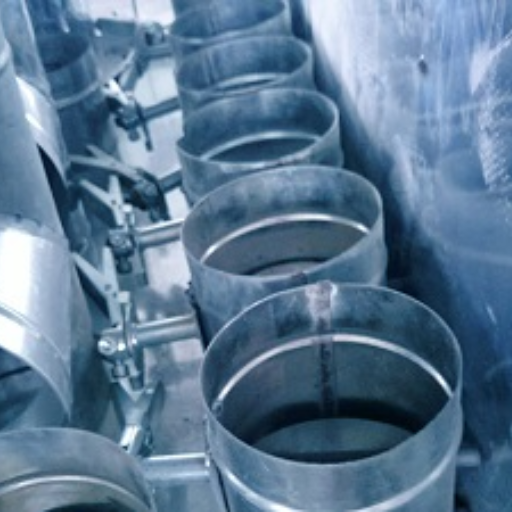
Sanitary tubing is a type of pipe used in industries such as food and beverage, pharmaceuticals, and biotechnology, which require strict hygiene standards. They are made of helpful products like stainless steel sanitary tubing, which is strong, will not rust, and is easy to clean. These tubes possess smooth, non-porous surfaces, thus reducing contamination. It is essential for maintaining safe and hygienic processes that protect the quality of products, consumers’ health, along with meeting regulations.
Understanding Sanitary Tubing in the Food and Beverage Industry
Sanitary tubing helps keep health standards in food production, processing, and service industries. These tubes’ non-porous surfaces are smooth which abridge microbial contamination while complying to strict sanitary regulations by the FDA and 3-A Sanitary Standards and ISO certifications.
Sanitary tubing is mostly manufactured from low-grade stainless steel 304 and 316L because of their durability against corrosion as well as the high temperatures during cleaning and sterilization. Moreover, these types of tubing can endure high pressures, making them able to transport thin liquids, such as milk, juice, wine, and beer, as well as thick liquids, like syrups and sauces.
The global sanitary tubing market is witnessing tremendous growth due to heightened demand for automated and sanitary production systems, especially within the food and beverage sector. The demand is further fueled by the rising consumption of convenience foods alongside advancements in clean-in-place (CIP) and sterilize-in-place (SIP) processes. To adhere to safety and efficiency regulations, manufacturers are offering safer, flexible, and easily installable tubing, which enhances overall safety. Sanitary tubing remains one of the foremost instruments in controlling product quality and consumer health safety.
How Sanitary Tubing Prevents Contamination and Ensures Hygiene
Sanitary tubing, used in food and beverage, pharmaceutical, and biotechnology sectors, deals with issues of contamination risks. A major concern when dealing with sanitary tubing is the slow-growing surface biofilms, or common contaminants that bacteria are. The solution to these problems is most commonly made of stainless steel, specifically 304 and 316L stainless steel, because of their unrivaled chemical and corrosion resistance. Research indicates that stainless steel fulfills all requirements of being corrosion resistant, exceeds expectations in terms of lifespan, and meets and especially fulfills hygiene standards.
Sanitary tubing now incorporates advanced welding along with modern constructions to eliminate any crevices or joints that might trap contaminants. Additional measures like rigorous WIT (water immersion test) and hydrostatic pressure testing, along with passivation, are done to improve cleanliness and to improve performance in hygienic conditions. These sanitary systems are ensured to maintain critical hygiene and safety standards as required by ISO 14159 and ASME BPE.
Furthermore, the data indicates that the use of sanitary tubing in CIP and SIP systems enhances overall productivity since cleaning time and water consumption are reduced by nearly 40%. Systems can perform self-cleaning routines without any manual disassembly, which minimizes downtime and improves safety. The sanitary tubing system remains critical for preserving hygiene and product quality in various industries because of its chemical resistance, low maintenance, and solid construction.
The Role of Sanitary Tubing in Pharmaceutical Applications
Sanitary tubing is one of the critical medical devices in economies which are industrialized like United States, Europe and Japan. Examples include drug biomanufacturing processes like as drug formulation and piping of bioreactors. This tubing is composed of stainless steel and ductile polymers which makes it possible for the tubing to be rigid enough to contain many liquids, gases, and semi solids without contamination.
Increasing precision in all PhD professional work of sanitary engineering with regard to function in a single sterile environment is a self-explanatory endeavor. In sanitary engineering, one is not surprised to see tubing marked ASME BPE. Regulatory marks are routinely checked against obsolete pre-bioprocess electropolished stainless steel tubes, whose claimed surface roughness of 0.4 microns Ra would create a much more adherent environment for bionewborns and microorganisms.
Last but not least using newly innovative technologies nowadays take CIP and SIP to improve effectiveness when it comes to sanitary tubing equipment.
This includes breakthroughs in fluid dynamics modeling, such as patented algorithms for tubbing pathways with thirty percent fewer cycles, improving scalability for production and funding external growth, and creating value regardless of preexisting worth. The advancement illustrates the impact of sanitary tubing on the uncompromising dominance of pharmaceuticals while achieving regulatory compliance and enhancing operational value.
Why is Stainless Steel Preferred for Sanitary Tubing?
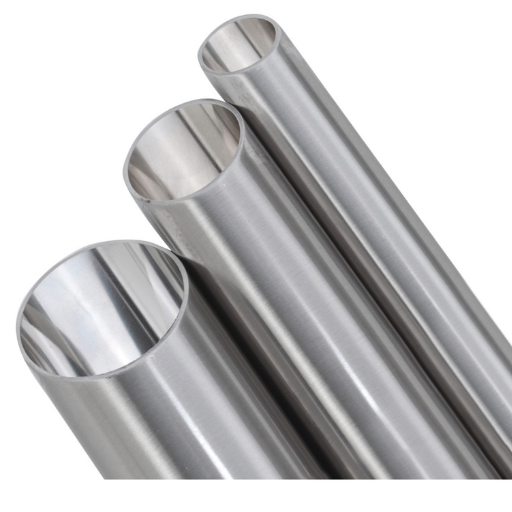
Stainless steel is well respected for its use in sanitary tubing because it holds enormous strength whilst resisting corrosion and is easy to clean. Even more, the stainless steel withstands harsh conditions like high temperatures and harsh chemicals, which helps it not lose structural integrity. The stainless steel’s structure is smooth and non-porous, which helps it minimize bacterial buildup while promoting safety for the food, beverage, and pharmaceutical industries. All these features and meeting regulatory demands make stainless steel the perfect material for sanitary tubing.
Benefits of 316L Stainless Steel in Sanitary Tubing
the benefits of employing 316L stainless steel for sanitary tubing are crystal clear. Its exceptional surface finish, combined with being non-porous, guarantees hygiene by preventing bacterial biofilm formation. Also, corrosion doesn’t affect its durability, which is maintained even under extreme conditions. And most importantly, it complies with stringent health and safety regulations, which makes it ideal for the food and beverage and pharmaceutical industries where strict hygiene standards are required.
Corrosion Resistance of Stainless Steel Sanitary Tubing
Stainless steel sanitary tubing is used in food processing, pharmaceutical and chemicals industries because of its strength as well as its corrosion resistance. The corrosion resistance of stainless steel is claimed to be owing to the chromium content, which passively oxidizes and builds a protective oxide layer on the surface. Thus, stainless steel is able to withstand harsh environmental factors.
Molybdenum (2-3%) is particularly prone to be added to 316L stainless steel, thus making it unrivaled in defending materials against corrosion in saline or acidic environments. The Reverse conditions lower the erosion resistance, which is mostly determined by the pitting Resistance equivalent number (PREN). Compared to 304 stainless steel, which has a low PREN (18-20), 316L has a significantly higher average normal range (24-26). This evidence strongly indicates the supremacy of 316L steel in regard to dealing with harsh chemicals and environments with strong chlorides.
Although having lower chromium and nickel ratios, 304 stainless steel is far more economical, thus allowing for use in general applications that demand lesser exposure to corrosive elements. It’s located predominantly in inland non-marine regions, which also makes it the region’s most sponsoring candidate.
Generally, picking between 304 or 316L stainless steel sanitary tubing is based on specific operational requirements while considering the surrounding factors like cleanliness standards and budget.
What Types of Sanitary Fittings are Used in Sanitary Tubing?
Sanitary fittings of tubing are manufactured with safeguards against contamination. The most notable types are:
- Tri-Clamp Fittings: A common fitting type due to ease of attachment as well as disassembly, where secure and rapid connections are essential.
- Welded Fittings: These fittings facilitate a leak-proof and permanent connection, thus minimizing the risk of contamination.
- Compression Fittings: These fittings provide a good assembled seal while effortless assembly and a complete sanitary seal is maintained.
- Threaded Fittings: Where ability to remove is needed, these fittings are employed though not as commonly used due to hygiene concerns.
Each type is chosen against specific use cases and cleanliness standards in order to uphold hygiene standards.
Different Types of Sanitary Fittings and Their Applications
Sanitary fittings are primarily intended to maintain hygiene in food engineering, pharmaceuticals, and biotechnology, They can be divided into different types. Below, detailed applications and salient features regarding frequently used fittings are described.
- Tri-Clamp Fittings: These types of fittings are some of the most common in the food and beverage industry as they allow for quick disassembly of equipment for routine maintenance. This ease of access allows for supremely thorough cleansing while maintaining high levels of hygiene. Tri-clamp fittings are also among the most practical options in the industry as they allow for secure, leak-proof attachment.
- Welded Fittings: Welded fittings, while not as common, offer the most complete connection while simultaneously minimizing the opportunity for leaks and contamination. These fittings are best used in high purity applications such as the pharmaceutical industry where sterility is crucial and systems have crevice prone areas which bacteria can accumulate.
- Compression Fittings: Compression fittings are ideal for the effortless assembly of structures under strict sanitary conditions. The frames under compression fitting assemblies are adaptable and commonly used in labs or bio-manufacturing environments where changeable structures are plentiful.
- Threaded Fittings: Though less hygienic, threaded fittings remain a reliable option where speed is essential when assembling or disassembling a system. While consideration must be taken around where these components are placed, they are best fitted in non-critical areas where flexibility surpasses the need for tightened sanitary measures.
- Flanged Fittings: Term given to fittings dealing with very high pressure and high temperature steam is known as Flanged fittings. Most industrial steam and chemical processing lines are of an industrial nature and require steam lines characterized by their reliable strength, it is also often desirable to use bolted flanged connections because of their durability.
When choosing a sanitary fitting, aspects like material compatibility, temperature and pressure of operation, and cleaning and sanitization requirements need to be evaluated. Most fittings are manufactured of stainless steel, primarily 304 and 316L, due to their corrosion resistance and strength. Fittings are manufactured to meet higher-level industry standards; thus, they are compliant with ASME BPE and/or FDA regulations. These standards are critical to assuring the fitting’s structural integrity and the safety of patients.
With appropriate design specifications, industries can achieve the required system operational performance while observing hygiene and safety protocols.
Materials Used in Sanitary Fittings to Ensure Hygiene
Sanitary fittings are crafted from materials that do not rust, are easy to clean, and can endure harsh environments. For these purposes, the most utilized is stainless Steel 304 and 316L grades. Especially, stainless steel 316L is favored due to its high molybdenum content, which provides exceptional resistance to pitting and crevice corrosion. This makes it ideal for very harsh environments like facilities in the pharmaceutical and dairy industries. These grades are also passive and do not react with active, sensitive ingredients, thus avoiding contamination during production processes.
For further prevention of sanitary standards are also met, and many fittings are also electro-polished. This treatment improves the polish of the surface, making it smooth, thus, it is very difficult for microbial and biofilm populations to form because microscopic crevices, which can harbor bacteria, are eliminated. There are data that suggest roughness (Ra value) requirements of fittings shall not exceed minus 0.8 micrometers, which is required for sanitary ASME BPE that is meant for hygiene and safety.
Sometimes other, more advanced materials are used to make the gaskets or seals for hygienic fitting, such as elastomers. These materials possess exceptional resistance to chemical exposure and high durability against elevated temperatures.
As an illustration, PTFE handed gaskets offer a sterile seal between components ensuring no contamination takes place, which is critical whenever there is a risk of contamination during processing.
The sanitary grade gaskets and components along with applying sophisticated polishing techniques and using high-performance materials ensures the hygiene is upheld in diverse industries like food and bioengineering without compromising on the sensitive procedures.
Design Aspects of Sanitary Fittings for Optimal Hygiene
Sanitary fittings design plays an important role in achieving optimum hygiene, especially for industries that are sensitive to contamination. Some fitting designs are now referred to as sanitary as they incorporate design features, the configuration of internal surfaces, the reduction of crevice spaces, and the seamless joining of surfaces, all of which ensure that contaminants like bacteria and chemical residues cannot be harbored. In line with industry needs, surfaces with roughness average (Ra) of 0.8 μm and below are easy to clean and sterilize, particularly in food and bio-technology industries.
The self-draining property for hygienic design also eliminates standing fluid, which is a potential reservoir for microorganisms. However, certain materials are preferred, stainless steel 316L, for example. Its suitability is due to its resistance to corrosion, non-reactivity, and durability to high-temperature cleaning processes such as CIP (Clean-in-Place) or SIP (Steam-in-Place). Also, the use of food-grade silicone and EPDM gaskets and seals improves the sanitary aspects of these fittings by leaching of protective sensitive products from harmful substances.
A critical design consideration is achieving the required functionality and cleanliness from the fittings while either complying with ISO 2852, ASME BPE, or even EHEDG. Well designed systems increase operational safety and efficiency while reducing risk to the public and meeting standards.
How Do Sanitary Standards Ensure Hygiene and Safety?
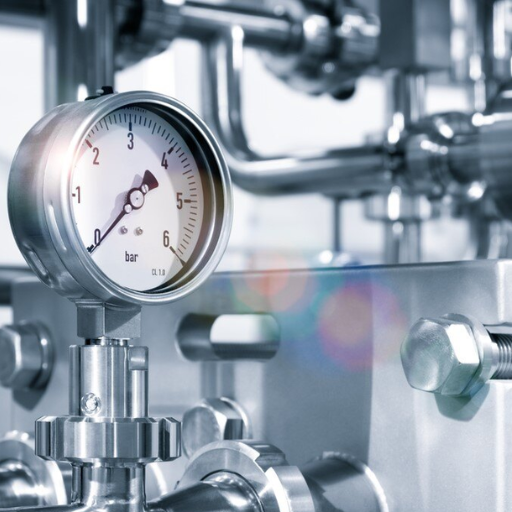
Sanitary standards specify the actions needed to be undertaken in order to maintain the cleanliness and safety of the sanitation equipment, structures, and components. These standards restrict the use of materials that are non-contaminating, smooth, non-absorbent, and impervious. Also, these standards offer protective shape designs that are easy to defend against bacterial or microbial colonies and maintenance routines that decrease the chances of such colonies. Inspection done periodically eliminates violations during the enforcement of sanitation procedures, which ensures hygiene and sanitation of the sanitation methods used.
Understanding 3-A Sanitary Standards in the Industry
Following strict sanitary guidelines, the 3-A Sanitary Standards were developed to ease the hygiene of processes and equipment in the food, dairy, and pharmaceutical industries. In addition to process decontamination, these standards also aim to ensure the safety and quality of the consumables. Compliance focus is increasing due to recent industry reports claiming more than 1000 companies around the world use 3-A Certified equipment.
These standards improve societal order by providing ease of cleaning, prevention of microbial contamination, and proper materials as the main criteria. The most widely used material, grade 304 and 316 stainless steel with resistance to corrosion, is further augmented by design features such as hygienically welded seams and polished surfaces with roughness averages (Ra) of 0.8 micrometers. These features further enhance ease of cleaning and disinfection, thus leading to improved sanitization.
One of the operational benefits of adopting 3-A Sanitary Standards is an improved product quality assurance as well as compliance with global food safety regulations, such as FSMA (Food Safety Modernization Act). These standards enable businesses to demonstrate their commitment to protection of health and build trust as well as long-term satisfaction among consumers.
Ensuring Compliance with Stringent Hygiene Standards
Strict hygiene compliance relies on well-defined protocols and the adoption of new technologies. Businesses ought to implement automated robotic cleansing-in-place (CIP) systems as they provide CIP sanitization on a robotic level. Studies show that these systems boost cleaning efficacy by an additional twenty percent, while simultaneously decreasing the use of water and energy by up to thirty percent. Sensors, IoT devices, and other real-time monitoring systems are equally important in preserving hygiene. These systems ensure surfaces are monitored in real-time, thereby preventing microbial contamination.
Even the most sophisticated systems would need an operator, thus requiring knowledge-fueled training, which remains imperative. Companies that prioritize hygiene training experience up to forty percent improvement in non-compliance incidents. Most significantly, routine audits and third-party certification allow for verification of compliance,e which strengthens market confidence and trust among consumers and business partners. Therefore, modern technologies collect and analyze data to best achieve the highest levels of hygiene in businesses alongside well-educated staff and an interdisciplinary approach.
Role of Sanitary Standards in Food Processing
The cleanliness and safety of food products are one of the most critical components of the food industry as it guarantees public health, safety, and trust, particularly along the processing chain. Studies indicate that nearly 568 million individuals suffer from foodborne illness annually due to a lack of domain hygiene protocol within the industry. Adhering to specific sanitary procedures, such as scheduled cleaning of the equipment and employing FDA-approved sanitizing solutions, aids in the reduction of contaminants on surfaces by 99.9%. Furthermore, sanitation process automation reduces most manual errors, thereby increasing effectiveness, consistency, compliance, and overall process outcomes.
On another note, the identification of threat and risk mitigation standards, such as GMP and HACCP, P, brings about improvement with real-time pathogen monitoring, providing detection that reduces product recalls, hence the increased need for pathogen control. Enhanced pathogens’ presence increases the need for more effective disinfection measures, and ISO 22000 in combination with SQF assists organizations to obtain a competitive market advantage while improving market trust.
Integrating relevant technology with international sanitary standards enhances public health and improves stakeholder relations.
Where is Sanitary Tubing Used in Industry?
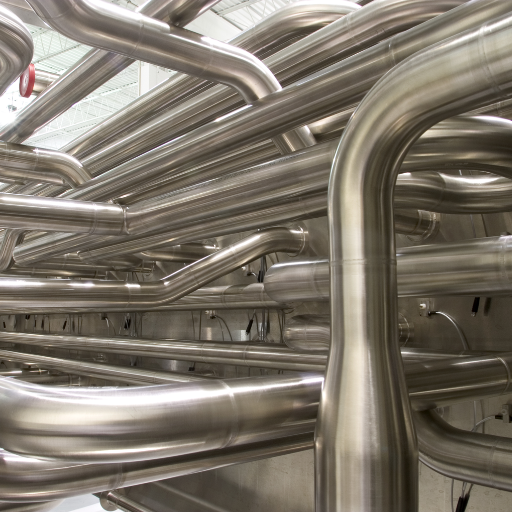
Sanitary tubing is widely used in industries that prioritize cleanliness. The main applications are as follows:
- Food and Beverage Production: Intended to carry substances like milk, beer, and juices in liquid form without any chance of contamination.
- Pharmaceutical Manufacturing: Offers protection for fragile substances such as medicines and vaccines from contamination during transfer.
- Dairy Industry: Aided in the operations concerning raw milk and its by-products.
- Biotechnology and Bio-processing: Allows for the use of non-contaminating processes in the manufacture of biological products, including vaccines, enzymes, and other biological materials.
This kind of tubing is essential in sterile environments where contamination and degradation of product quality need to be avoided.
Industries Where Hygiene is Critical
Different sectors of the economy may require sanitation because the slightest pollution might have serious repercussions. These methods to uphold order and system can be enumerated as follows:
- Pharmaceutical Manufacturing: As the world’s pharmaceutical market is around $1.48 trillion in 2022, it places a great reliance on cleanroom environments and materials such as medical-grade silicone tubing. Sterile materials and equipment contribute significantly to the effectiveness of pharmaceuticals for sterile medicines and vaccines.
- Dairy Industry: As the global dairy market is expected to reach $871 billion by 2027, hygiene, in order to prevent spoilage and contamination, is paramount. This sector exceptionally makes use of food-grade tubing of high standards, so that milk and dairy products can be transferred from processing plants to packaging plants without compromise in quality.
- Biotechnology and Bio-processing: As biotechnology is estimated to grow to 775 billion by 2024, like other sectors, an environment free of microbial contamination is required. Precision is necessary to intestines in the fabrication of enzymes, vaccines, and other biological products, which means sterile parts have to be ensured in the process.
- Food and Beverage Processing: An industry worth $4 trillion globally requires the use of sanitary components such as FDA-approved tubes to reduce contamination during production, processing, and packaging. These sanitation practices are essential in maintaining the product’s quality and the consumer’s health.
- Healthcare and Medical Applications: Patient care in the healthcare sector, which was valued at over $11 trillion in 2022, directly affects hygiene standards. The presence of microorganisms in the patient care sphere, be it in surgery or medical appliances, mandates the use of sterile biocompatible materials in order to prevent cross-infection.
By employing rigorous hygiene protocols in addition to specialized equipment, these industries safeguard public health, enhance quality standards, and fulfill legal obligations.”
Importance of Sanitary Tubing in Beverage Production
Sanitary tubes are important for the beverage industry’s hygiene and protection during production. These tubes guarantee the sanitary transfer of liquids throughout every step of manufacturing. These tubes are produced from food-grade stainless steel, which is clean, durable, and corrosion-resistant.
The global beverage industry’s market size reached over 1.8 trillion dollars in 2023, and the demand in the market is continuously growing. This increase has created a greater need for supplied quality sanitary measures that reliable tubing systems can offer. Sanitary tubing is critical for compliance with FDA regulations and also for clean-in-place (CIP) maintenance, which minimizes disruption to production lines. Unparalleled pneumatic protection from microbial contamination provides stronger reliability, which increases value as an operational necessity in beverage production.
Reference Sources
- Digital Coherent DSP-based PON Technology (IEEE Xplore):
- This paper reviews advancements in Passive Optical Network (PON) technologies, focusing on achieving terabit-class optical access systems for Beyond-5G/6G networks. It highlights the use of Digital Coherent DSP to support data rates exceeding 50 Gb/s per wavelength1.
- Data Communications Applications (Google Books):
- The book discusses advancements in communication technologies, including SFP modules, but the specific details about methodologies or findings are not accessible from the preview2.
- Optimizing Load Distribution for Efficient Content Delivery Networks:
- The PDF content was inaccessible, so I couldn’t extract any relevant information
Frequently Asked Questions (FAQs)
Q: How does the use of sanitary tubing ensure hygiene and safety?
A: Sanitary tubing ensures hygiene and safety by providing a smooth, non-porous surface that prevents the accumulation of bacteria. The use of sanitary materials, such as stainless steel, is crucial in maintaining cleanliness and hygiene, ensuring that sanitary conditions are met in various applications.
Q: Why are stainless steel sanitary tubes preferred in sanitary piping systems?
A: Stainless steel sanitary tubes are preferred because they are corrosion-resistant, durable, and easy to clean. These properties make them ideal for maintaining sanitary conditions in environments that require high hygiene standards.
Q: What role do fittings used in sanitary tubing play in maintaining hygiene?
A: Fittings used in sanitary tubing, such as high-quality sanitary fittings, are designed to ensure smooth fluid flow and prevent leaks. This helps in maintaining sanitary conditions by minimizing the risk of contamination and ensuring that sanitary standards are consistently upheld.
Q: How do sanitary fittings ensure smooth fluid flow?
A: Sanitary fittings are designed with precision to create seamless connections between tubes, ensuring smooth fluid flow. This design minimizes turbulence and the potential for bacterial growth, thus maintaining cleanliness and hygiene in the system.
Q: What are the requirements for sanitary tubing in industries with high hygiene standards?
A: Industries with high hygiene standards rely on sanitary tubing that meets specific requirements, such as the use of sanitary materials, ease of cleaning, and resistance to corrosion. These features are essential to ensure that sanitary conditions are maintained consistently.
Q: How does the industry use sanitary piping systems to prevent contamination?
A: The industry uses sanitary piping systems to prevent contamination by incorporating sanitary stainless steel tubing and fittings that are easy to clean and maintain. This setup reduces the risk of bacterial growth and ensures that sanitary standards are met.
Q: What processes are involved in the manufacturing of sanitary tubing?
A: The manufacturing of sanitary tubing involves processes to ensure that the tubing meets high standards of hygiene and safety. This includes using high-quality materials, precision engineering, and rigorous testing to ensure that sanitary conditions are consistently achieved.
Q: How important is maintaining sanitary conditions in the food and beverage industries?
A: Maintaining sanitary conditions in the food and beverage industries is crucial for ensuring product safety and quality. The use of sanitary tubing and fittings helps prevent contamination, ensuring high hygiene standards throughout the production process.
Q: What types of sanitary fittings are available for use in various industries?
A: There are various sanitary fittings available, including clamps, elbows, tees, and valves. Each type is designed to meet specific needs, ensuring that sanitary conditions are maintained across different applications and industries.






